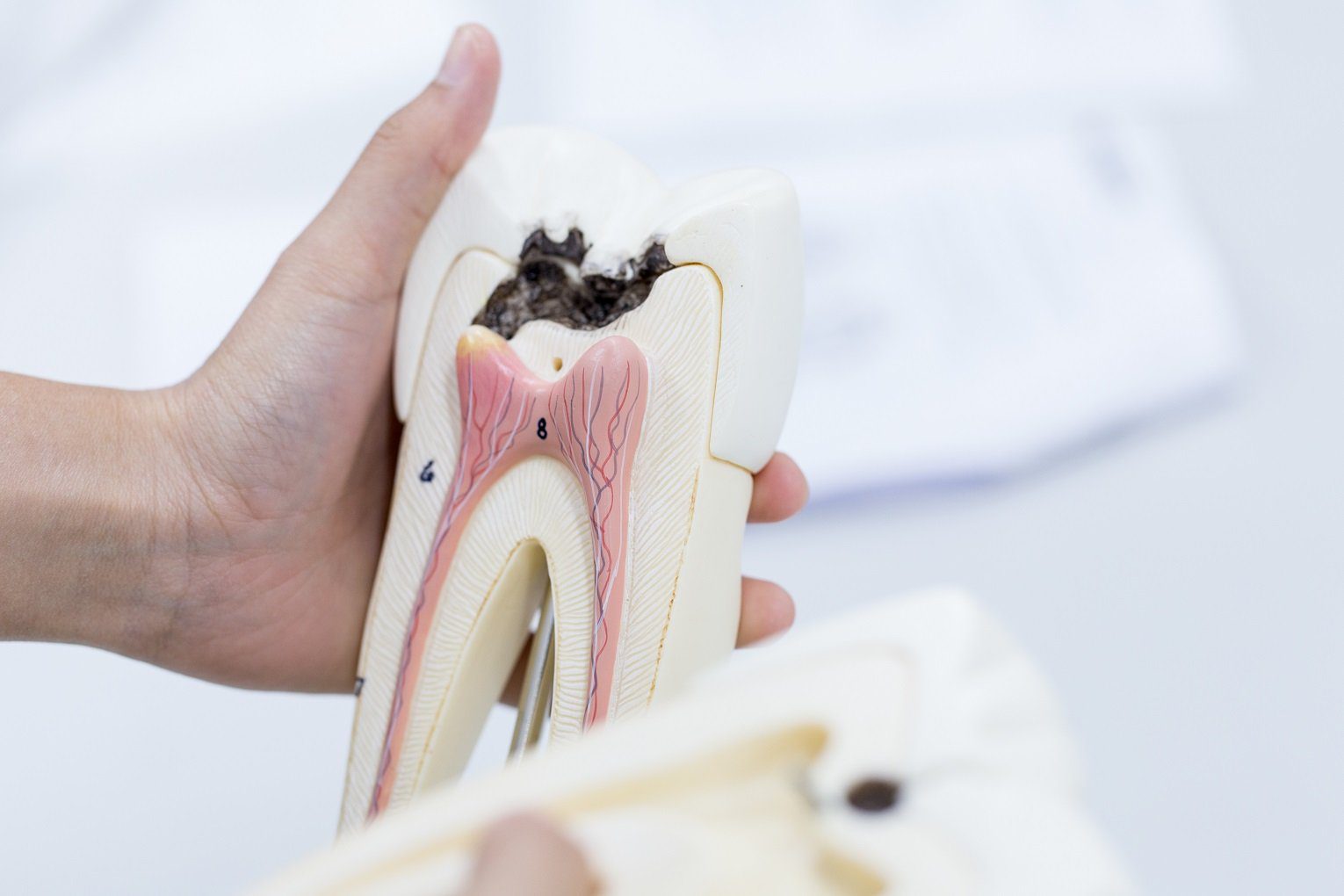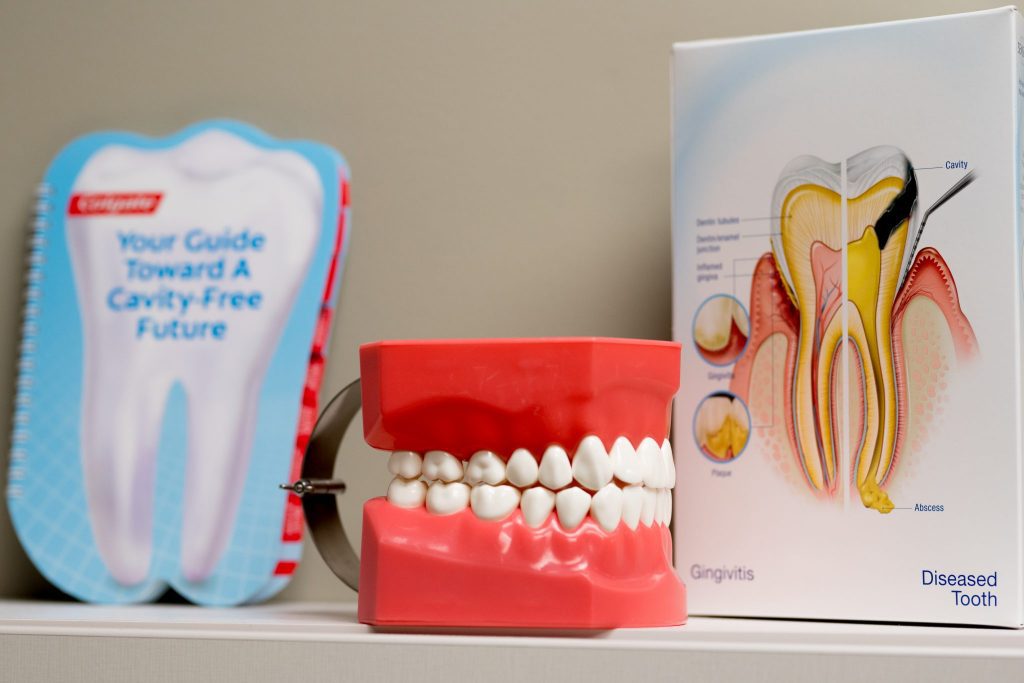Knowing how to prevent cavities is important. If you can prevent cavities, you prevent more serious health issues from occurring in the future.
In our last blog, “Dental Fillings: What To Expect”, we discussed what happens after you get a cavity. Let’s hit the rewind button to understand how to prevent cavities.
How to Prevent Cavities: Knowing What Causes Cavities
To know how to prevent cavities, it’s important to know what causes them.
Many assume that eating tons of sugar is the culprit behind those unwanted cavities. However, you’ve probably met someone who eats tons of sugar and has never had a cavity in their life! You’ve probably also known someone who barely eats any sugar but has had many cavities. It seems unfair, doesn’t it?
This goes to show that there are many risk factors at play when it comes to cavities forming.
• Tooth location. Decay most often occurs in your back teeth (molars and premolars). These teeth have lots of grooves, pits and crannies, and multiple roots that can collect food particles. As a result, they’re harder to keep clean than your smoother, easy-to-reach front teeth.
• Certain foods and drinks. Foods that cling to your teeth for a long time — such as milk, ice cream, honey, sugar, soda, dried fruit, cake, cookies, hard candy and mints, dry cereal, and chips — are more likely to cause decay than foods that are easily washed away by saliva.
• Frequent snacking or sipping. When you steadily snack or sip sugary drinks, you give mouth bacteria more fuel to produce acids that attack your teeth and wear them down. And sipping on pop or any other acidic drink throughout the day helps create a continual acid bath over your teeth (no good).
• Bedtime infant feeding. When babies are given bedtime bottles filled with milk, formula, juice or other sugar-containing liquids, these beverages remain on their teeth for hours while they sleep, feeding decay-causing bacteria. This damage is often called baby bottle tooth decay. Similar damage can occur when toddlers wander around drinking from a sippy cup filled with these beverages.
• Inadequate brushing. If you don’t clean your teeth soon after eating and drinking, plaque forms quickly and the first stages of decay can begin.
• Not getting enough fluoride. Fluoride, a naturally occurring mineral, helps prevent cavities and can even reverse the earliest stages of tooth damage. Because of its benefits for teeth, fluoride is added to many public water supplies. It’s also a common ingredient in toothpaste and mouth rinses.
• Older age. Over time, teeth can wear down and gums may recede, making teeth more vulnerable to root decay. Older adults also may use more medications that reduce saliva flow, increasing the risk of tooth decay.
• Dry mouth. Dry mouth is caused by a lack of saliva, which helps prevent tooth decay by washing away food and plaque from your teeth. Substances found in saliva also help counter the acid produced by bacteria. Certain medications, some medical conditions, radiation to your head or neck, or certain chemotherapy drugs can increase your risk of cavities by reducing saliva production.
• Worn fillings or retainers. Over the years, dental fillings can weaken, begin to break down or develop rough edges. This allows plaque to build up more easily and makes it harder to remove. Retainers can stop fitting well, allowing decay to set in underneath them.
• Heartburn. Heartburn or gastroesophageal reflux disease (GERD) can cause stomach acid to flow into your mouth (reflux), wearing away the enamel of your teeth and causing significant tooth damage. This exposes more of the dentin to bacteria, creating tooth decay. Your dentist may recommend that you consult your doctor to see if gastric reflux is the cause of your enamel loss.
• Eating disorders. Anorexia and bulimia can lead to significant tooth erosion and cavities. Stomach acid from repeated vomiting washes over the teeth and begins dissolving the enamel. Eating disorders also can interfere with saliva production.
 Types of Decay
Types of Decay
The above factors can cause three types of decay which ultimately lead to cavities.
• Root decay. This type of decay is the most common type among older adults who are more likely to have receding gums. It occurs on the surface of the roots of the teeth.
• Pit and fissure decay. This type of decay occurs on the chewing surfaces of the back teeth. It can be prevented with proper tooth brushing; however, if you’re inconsistent in your oral hygiene, this type of decay can quickly become severe.
• Smooth surface decay. This type of decay occurs on the outside flat surface of the teeth when bacteria is not removed and plaque builds up
How Long Does It Take for a Cavity to Form?
Regardless of what type of decay is happening, it can take months or even years for a cavity to form. As the bacterial plaque in your mouth produces acid (caused by one of the above risk factors), that acid slowly eats away at your tooth enamel.
Depending on how severe the decay is, this cavity will either require a filling, crown and/or root canal therapy from your dentist. Understanding how to prevent cavities can save you the time and money required for any of these dental procedures.
 How to Prevent Cavities
How to Prevent Cavities
There are a number of things you can do to reduce your chances of getting cavities.
• Brush with fluoride toothpaste after eating or drinking. Brush your teeth at least twice a day and ideally after every meal, using fluoride-containing toothpaste. To clean between your teeth, floss or use an interdental cleaner.
• Rinse your mouth. If your dentist feels you have a high risk of developing cavities, he or she may recommend that you use a mouth rinse with fluoride.
• Visit your dentist regularly. Get professional teeth cleanings and regular oral exams, which can help prevent problems or spot them early.
• Consider dental sealants. A sealant is a protective plastic coating applied to the chewing surface of back teeth. It seals off grooves and crannies that tend to collect food, protecting tooth enamel from plaque and acid.
• Drink some tap water. Most public water supplies have added fluoride, which can help reduce tooth decay significantly. If you drink only bottled water that doesn’t contain fluoride, you’ll miss out on fluoride benefits.
• Avoid frequent snacking and sipping. Whenever you eat or drink beverages other than water, you help your mouth bacteria create acids that can destroy tooth enamel. If you snack or drink throughout the day, your teeth are under constant attack.
• Eat tooth-healthy foods. Some foods and beverages are better for your teeth than others. Avoid foods that get stuck in grooves and pits of your teeth for long periods, or brush soon after eating them. However, foods such as fresh fruits and vegetables increase saliva flow, and unsweetened coffee, tea and sugar-free gum help wash away food particles.
• Consider fluoride treatments. Your dentist may recommend periodic fluoride treatments, especially if you aren’t getting enough fluoride through fluoridated drinking water or other sources. They may also recommend custom trays that fit over your teeth for application of prescription fluoride if your risk of tooth decay is very high.
• Ask about antibacterial treatments. If you’re especially vulnerable to tooth decay — for example, because of a medical condition — your dentist may recommend special antibacterial mouth rinses or other treatments to help cut down on harmful bacteria in your mouth.
• Combined treatments. Chewing xylitol-based gum (just check the ingredient list) along with using a prescription fluoride and an antibacterial rinse can help reduce the risk of cavities.
How Do I Know If I Have a Cavity?
The signs and symptoms of cavities vary, depending on their extent and location. When a cavity is just beginning, you may not notice any symptoms at all. As the decay gets larger, it may cause signs and symptoms such as:
• Toothache, spontaneous pain or pain that occurs without any apparent cause
• Tooth sensitivity
• Mild to sharp pain when eating or drinking something sweet, hot or cold
• Visible holes or pits in your teeth
• Brown, black or white staining on any surface of a tooth
• Pain when you bite down
 When to See Your West Kelowna Dentist
When to See Your West Kelowna Dentist
If you experience a toothache or mouth pain, see your dentist as soon as possible.

 How to Prevent Cavities
How to Prevent Cavities When to See Your West Kelowna Dentist
When to See Your West Kelowna Dentist